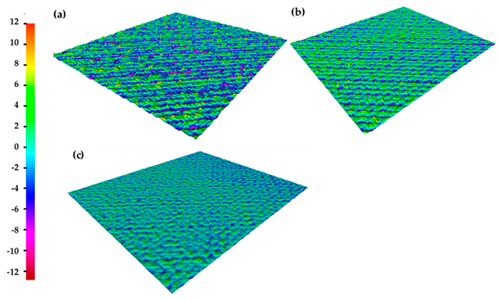
In this paper, a quick nanosecond laser micro structuring process was employed to change the surface wettability of Ti6Al4V alloy. The same laser structuring method was used throughout, but with varying input fluence. The laser processing parameters resulted in high surface melting. After laser treatment, four post-processing methods were used, namely high vacuum, low temperature annealing, storage in a polyethylene bag, and storage in ambient air. Subsequently, the water droplet contact angle was measured over a long time period of 55 days. The results show that the sample stored in ambient air remained hydrophilic. On the other hand, the sample post-processed in a vacuum chamber behaved hydrophobically with a contact angle of approximately 150°. Other post-processing did not lead to specific wettability behavior. After wettability testing, all samples were cleaned ultrasonically in distilled water. This cleaning process led to annulation of all obtained properties through post-processing. In summary, this paper shows that it is more important to study surface chemistry than topography in terms of effects on wettability. Moreover, surface wettability can be controlled by laser structuring, post-processing, and surface cleaning.